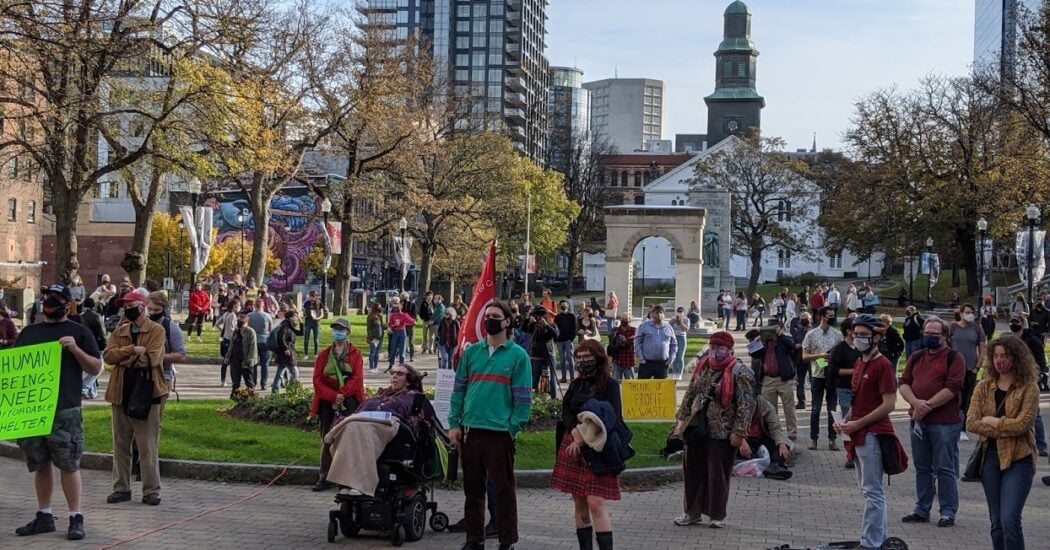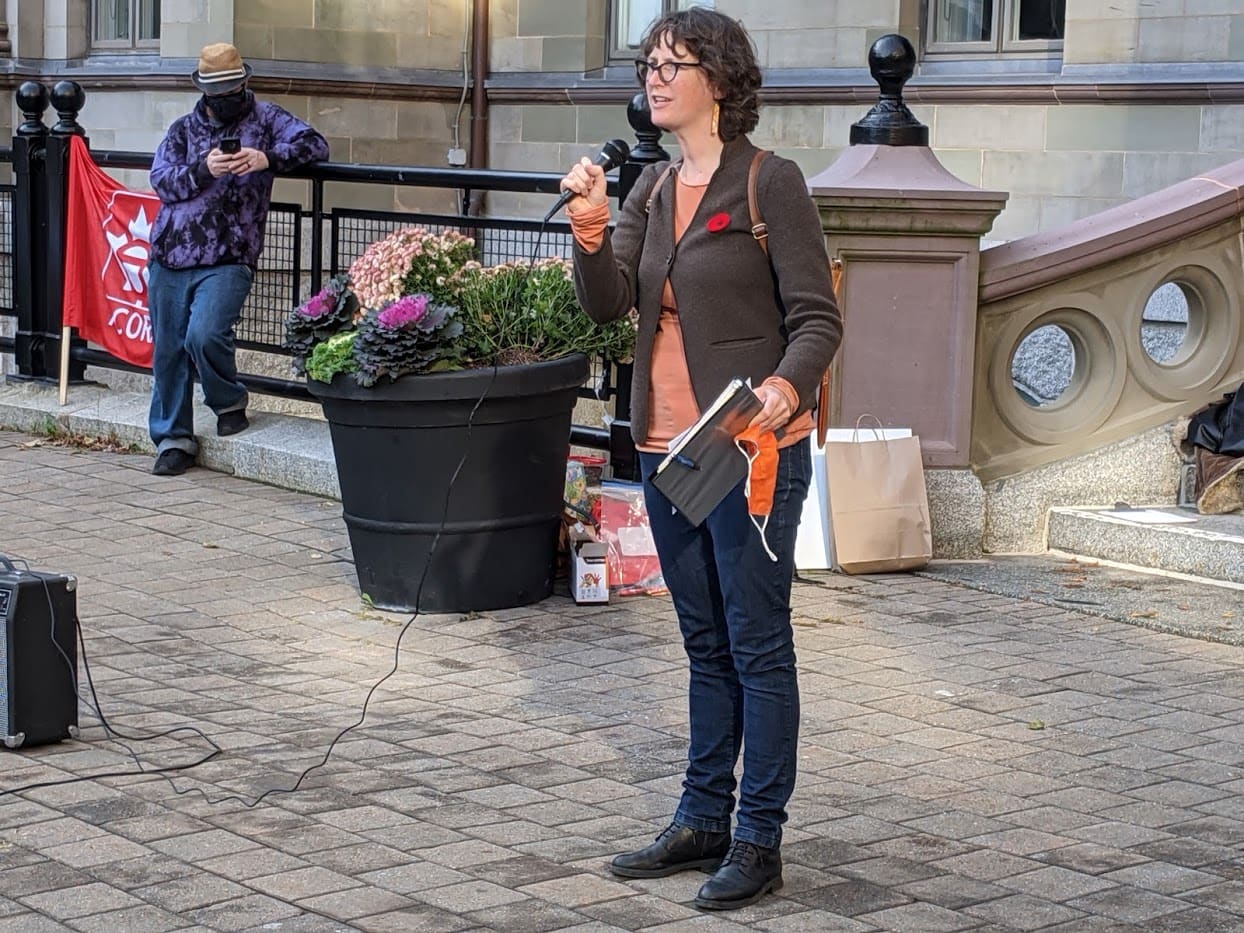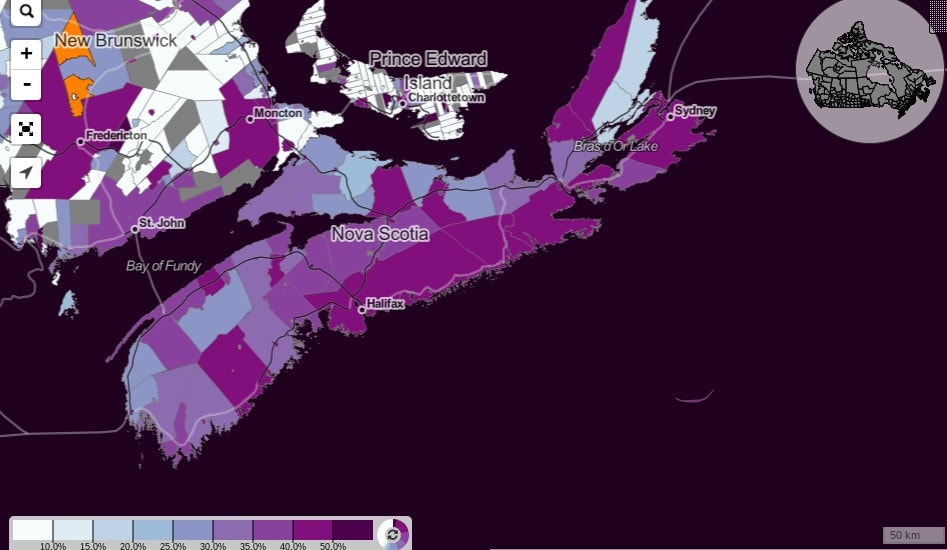
KJIPUKTUK (Halifax) – This month, the city of Toronto is expected to debate the implementation of inclusionary zoning policies to help remedy the lack of safe, secure, and affordable housing in the Greater Toronto Area.
Inclusionary zoning is a land-use planning tool that allows the city to mandate a certain percentage of affordable housing in new developments.
“With inclusionary zoning, the requirement for affordable housing is set out upfront in the city’s official plan, instead of being negotiated on a site-by-site basis,” Christine Ono, Senior Planner with the City of Toronto, explained at an April seminar. “Because it’s mandatory, affordable housing must be secured as part of the development approval process.”
Inclusionary zoning policies in Toronto are limited by legislation to being implemented within a 500 to 800 metre radius of a public transportation system. The policies are designed to help “those who earn too much to be eligible for social housing but not enough to be able to afford market rents or prices.”
The United States, for example, has implemented inclusionary zoning in hundreds of jurisdictions, according to Ono. With more and more Nova Scotians finding themselves unable to afford exorbitant rents across the province, could inclusionary zoning be a solution to our rapidly escalating rental crisis?
NDP brought inclusionary zoning bill forward, Liberals looked the other way

Nova Scotia NDP MLA Lisa Roberts, who also serves as the party’s housing spokesperson, says the province needs to take meaningful action on the housing crisis in Nova Scotia, with a greater sense of urgency.
“I meet seniors who are ready to downsize, but the rental market is so unaffordable in comparison to their monthly costs,” Roberts said.
At a recent rent control rally, Roberts was also struck by the number of young university graduates stuck in “adolescent life” because they can’t find a place to move out.
“So they’re living in the basement of their parents’ home, which is too far away from their work, so they have to have a car [and] they’re spending all their money on their car, but not able to save anything towards [a] damage deposit.”
Her party put forward a motion in 2018 to implement inclusionary zoning policies as part of a series of approaches to solve the lack of affordable housing, but the Rankin government wouldn’t bite.
“I think the province needs to be working with municipalities because frankly, the housing situation has been allowed to get worse and worse over quite a long time,” Roberts said. She also attributes part of the lack of action on affordable housing to the constant shuffling of the Liberal Cabinet, a regularity under Premier Stephen McNeil.

Last month, the province’s Affordable Housing Commission released a 61-page report, with recommendations including the termination of rent control when the state of emergency is lifted, likely as early as September. The term ‘inclusionary zoning’ appears once in the report:
Roberts calls the report “underwhelming” and “maybe not surpris[ing] but disappointing.” She says rent supplements, like the current government are offering, leaves too many falling through the cracks.
“Many people who are offered [rent supplements] don’t take them, because it means that they’ll come off the public housing waitlist, which is actually housing that they can afford,” Roberts explained. She calls rent supplements, which ultimately go to the pockets of landlords, “a public transfer of public dollars.”
Roberts has spoken in support of inclusionary zoning in the Legislature. She has previously proposed enabling inclusionary zoning policies through Bill 75, “The Affordable Housing Through Inclusionary Zoning Act.” The legislation would give more power to municipalities to combat rising rental markets and create more affordable housing in the process.
“I think it makes sense to be building density in association with transit, because otherwise, you’re building big buildings with big parking lots and then you have congestion, which … doesn’t ultimately help us accomplish our goals around climate change,” Roberts said.
Density bonusing vs inclusionary zoning
For too long, the housing crisis in Halifax has been treated as a ‘hot potato’ between the municipality and the province. While the province is technically in charge of housing, HRM has stepped up, when the price is right.
HRM’s municipality planning strategy has previously been used to negotiate a set number of affordable units within a development in exchange for granting land-use bylaw amendments.
As well, Halifax’s Centre Plan, approved in 2019, allows developers to circumvent rules around size as long as they pay a “density bonus” into a fund earmarked for affordable housing initiatives.
Inclusionary zoning however would give municipalities another and potentially more powerful mechanism to accomplish those objectives.
One in ten Toronto renters are in arrears
The fight for inclusionary zoning is one that is long-fought, according to PHD candidate Jeremy Withers.
“It has coalesced after many years of scattered neighborhood-based campaigns to require individual new developments to include some housing affordable to local renters, who are increasingly facing displacement pressures,” he explained.
Withers, who studies in the Department of Geography and Planning at the University of Toronto, centered his dissertation on the development and potential of inclusionary zoning in Toronto.
“Organizations are united in advocating for a policy that would require a minimum of 20-30% of new high rise developments be set aside for rental housing permanently affordable for a mix of low and middle income residents,” Withers explained.
Withers says that as of April 2021, 1 in 10 Toronto renters are in arrears.
He points to a frightening stat: for every purpose-built rental unit in the last decade, nine condos were developed. Renters in Ontario make up for half of the province’s households and are on track to outnumber homeowners within the next decade.
“Of all the housing built in the last decade, only 2.5% were priced affordably for the core half of renters,” Withers at the seminar. “That’s just over 4,000 units completed for just over 250,000 lower-income renter households.”
The city’s proposal would apply to developments with between 100 and 140 units. All units in inclusionary zoning must remain affordable for 99 years, but will only apply to development applications submitted before January 1, 2022.
Withers says the city’s proposed inclusionary zoning policies are ‘conservative’ and argues the city’s study shows it’s feasible to require two to four times more affordable housing units than its current proposal.
Toronto is also reviewing their definition of affordable housing with a more income-based approach, rather than by average market rent.
“There’s so much potential to expand access to affordable housing,” Withers says, “simply by requiring developments [to] include them.”
See also: News brief: Rent poor in Nova Scotia
Check out our new community calendar!
With a special thanks to our generous donors who make publication of the Nova Scotia Advocate possible.
Subscribe to the Nova Scotia Advocate weekly digest and never miss an article again. It’s free!




Thanks for articulating this. I sent this text to Premier Rankin and Cabinet last week:
There is a LOT of talk about the need for affordable (whatever that means) housing. I propose we think about this in a different way. We need “Generative Neighbourhoods”. These are integrated mixed places that challenge conventional planning and zoning. They combine the strengths of the land with the needs of the community. There is never any ghettoization of any sort like our current system inadvertently causes. Just think of it. Rich areas. Poor areas. Industrial areas. Commercial areas, Agricultural areas, etc. You know. R1, R2, R3, etc. This kind of class system only benefits a privileged few. We can do better. We can build neighbourhoods based on interdependence, mutual respect and care. In this 2013 video it is clear what the people agreed to – IE mixed residential, commercial, agricultural, universally accessible, mixed income, generative neighbourhoods. Right now our municipal zoning prohibits this. We need a review of Planning and zoning before we build any more ghettos for wealthy people or cash strapped people.
This is the video Housing First Association of Kings County made in collaboration with our community way back in 2013.
https://youtu.be/6xT8sWN-hjE
It is time for Kings County (and Nova Scotia) to have a careful look at our laws around private property, zoning and development.
I am currently beginning a new volunteer position with the Alexander Society for Inclusive Arts (https://www.alexandersociety.org) to offer free social and economic renewal design services to developers and municipalities who are serious about building prosperous neighbourhoods and communities. We are in communication with a global network of people actively practicing inclusive culture. They are called the Camphill Movement for social renewal. https://www.camphill.org Please share this opportunity with developers you meet. Give them my contact information and I will gladly help them.
Meanwhile this is also happening… https://housingishealth.ca/hh-letter
Cheers!
Mr. Kimberly Smith, 2019 Provincial Volunteer for Kings County